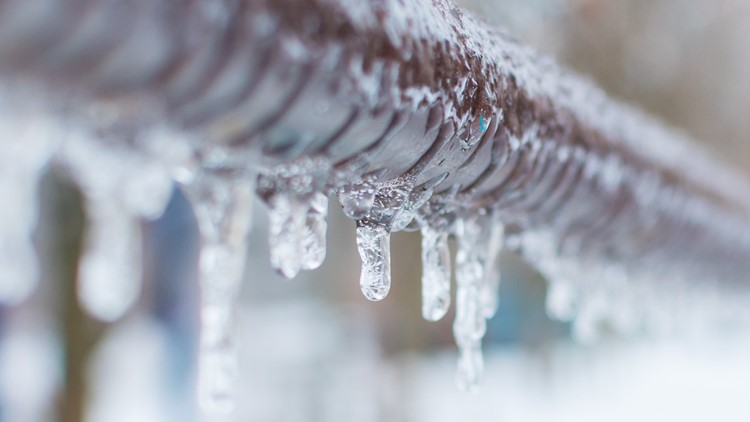The article author is making a number of great points on the subject of Preventing and dealing with frozen pipes in general in the article down the page.

Winter can wreak havoc on your pipes, specifically by freezing pipes. Here's how to stop it from occurring and what to do if it does.
Intro
As temperatures drop, the danger of frozen pipelines increases, possibly resulting in pricey repair work and water damages. Comprehending just how to prevent icy pipes is vital for homeowners in chilly climates.
Prevention Tips
Shielding prone pipelines
Wrap pipelines in insulation sleeves or use heat tape to shield them from freezing temperature levels. Focus on pipelines in unheated or exterior locations of the home.
Home heating methods
Maintain indoor spaces adequately heated up, specifically locations with plumbing. Open cupboard doors to enable cozy air to flow around pipes under sinks.
Just how to recognize frozen pipes
Look for decreased water flow from faucets, unusual odors or noises from pipes, and visible frost on subjected pipes.
Long-Term Solutions
Structural modifications
Think about rerouting pipes away from exterior wall surfaces or unheated locations. Include additional insulation to attics, basements, and crawl spaces.
Upgrading insulation
Buy premium insulation for pipelines, attics, and wall surfaces. Appropriate insulation aids preserve consistent temperature levels and decreases the risk of icy pipes.
Securing Outdoor Plumbing
Yard hose pipes and exterior faucets
Detach and drain pipes yard hose pipes before winter. Set up frost-proof spigots or cover outdoor taps with shielded caps.
Recognizing Icy Pipelines
What triggers pipelines to freeze?
Pipelines ice up when revealed to temperature levels below 32 ° F (0 ° C) for extended durations. As water inside the pipelines ices up, it expands, putting pressure on the pipeline wall surfaces and possibly causing them to rupture.
Dangers and problems
Icy pipelines can lead to water system disruptions, residential property damage, and costly fixings. Ruptured pipelines can flood homes and trigger comprehensive structural damages.
Indicators of Frozen Piping
Determining frozen pipes early can stop them from breaking.
What to Do If Your Pipelines Freeze
Immediate activities to take
If you think frozen pipelines, keep taps available to ease pressure as the ice thaws. Use a hairdryer or towels soaked in warm water to thaw pipes gradually.
Final thought
Avoiding icy pipes calls for proactive actions and quick responses. By recognizing the causes, signs, and safety nets, homeowners can secure their plumbing throughout winter.
5 Ways to Prevent Frozen Pipes
Drain Outdoor Faucets and Disconnect Hoses
First, close the shut-off valve that controls the flow of water in the pipe to your outdoor faucet. Then, head outside to disconnect and drain your hose and open the outdoor faucet to allow the water to completely drain out of the line. Turn off the faucet when done. Finally, head back to the shut-off valve and drain the remaining water inside the pipe into a bucket or container. Additionally, if you have a home irrigation system, you should consider hiring an expert to clear the system of water each year.
Insulate Pipes
One of the best and most cost-effective methods for preventing frozen water pipes is to wrap your pipes with insulation. This is especially important for areas in your home that aren’t exposed to heat, such as an attic. We suggest using foam sleeves, which can typically be found at your local hardware store.
Keep Heat Running at 65
Your pipes are located inside your walls, and the temperature there is much colder than the rest of the house. To prevent your pipes from freezing, The Insurance Information Institute suggests that you keep your home heated to at least 65 degrees, even when traveling. You may want to invest in smart devices that can keep an eye on the temperature in your home while you’re away.
Leave Water Dripping
Moving water — even a small trickle — can prevent ice from forming inside your pipes. When freezing temps are imminent, start a drip of water from all faucets that serve exposed pipes. Leaving a few faucets running will also help relieve pressure inside the pipes and help prevent a rupture if the water inside freezes.
Open Cupboard Doors
Warm your kitchen and bathroom pipes by opening cupboards and vanities. You should also leave your interior doors ajar to help warm air circulate evenly throughout your home.

We were shown that editorial on Preventing and dealing with frozen pipes from a buddy on our other web blog. Loved our blog? Please quickly share it. Let another person discover it. I am grateful for being here. Come back soon.
Call Today